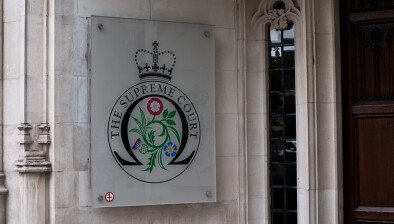NI Coroner’s Court: ‘Frightened’ army soldier shot and killed devoted mother in her own garden

Northern Ireland’s Coroner’s Court found that an army soldier caused the death of a Derry resident in 1971, by shooting into her garden without justification.

About this case:
- Citation:[2022] NI Coroner 1
- Judgment:
- Court:NI Coroner's Court
Soldier D discharged two shots into the rear garden of Kathleen Thompson’s home, in violation of guidance on the matter, as a result of fear and his own over-reactions.
Background
This inquest concerned the 1971 death of Kathleen Thompson, who was shot and killed in the rear garden of her home in Rathlin Drive, Derry.
An inquest was conducted in 1972, which recorded an open verdict. In 2013, the Attorney General for Northern Ireland directed that a new inquest be held.
Kathleen was married to Patrick Thompson and they had six children, who at the time of her death were aged between 7 and 18.
An army patrol was in the vicinity on that night, and Soldier D discharged two bullets into the garden of Kathleen Thomson’s home. Soldier D was in a group who on that night were engaged in a search and arrest operation at number 58 Rathlin Drive, a property opposite Mrs Thompson’s home.
As a soldier was implicated in the death, the court was tasked with ascertaining whether the use of lethal force was justified. This led to the further consideration of whether the use of such force and the operation in which it was used were regulated, planned, or controlled in such a way as to minimise to the greatest extent possible any risk to life.
The use of force
The first question the judge considered was whether the soldier who fired the fatal shot held an honest belief that it was necessary to use force. The next question was whether the level of force used by that soldier was no more than was absolutely necessary.
In assessing this, the court noted that the individual involved was a trained soldier, rather than an untrained civilian.
Northern Ireland army personnel at that time were issued with a set of instructions on the circumstances in which it would be appropriate to open fire, commonly referred to as the “Yellow Card”. At the time, this guidance included:
Never use more force than the minimum necessary to enable you to carry out your duties.
Always first try to handle a situation by other means than opening fire.
If you have to fire
(a) Fire only aimed shots.
(b) Do not fire more rounds than are absolutely necessary to achieve your aim.
A warning should be given before you open fire.
The court noted that any firing violating the Yellow Card guidance suggested that the use of force was not justified.
The evidence
Firstly, the court noted that it had been decades since the events occurred. This was “bound to have affected the recollections of those who witnessed and participated in the events”.
At the time, the Creggan Estate was a “no-go area” for soldiers, and was one of the most contentious areas of Derry.
Log entries from the arrest operation in Creggan noted that it was unsuccessful, “fire exchanged, details to follow.” It was alleged that the troops withdrawing from the operation were fired upon and that fire was returned.
Mrs Thompson’s husband gave evidence that he returned home at around 11.15pm that night, and joined his wife and children to watch a film. Around midnight, they saw soldiers at a nearby house.
Mrs Thompson went out through the kitchen towards the back garden. He heard four or five shots being fired. He stood up on his garden wall and when he happened to look over his fence, he saw his wife lying on the ground just inside the fence.
Their daughter stated that the army had no dealings with her family prior to this night. Her mother was a well-respected lady and a devoted mother. She described how their lives were changed forever saying, “although life went on nothing was the same.”
Evidence of the shooting noted that the character of the entrance wound and the degree of penetration were consistent with a bullet of high velocity fired at greater than close range.
There was no evidence that Soldier D’s gun was seized and tested following the shooting. There was no evidence of any other forensic investigations having been undertaken.
Statements made by the soldiers were the subject of considerable scrutiny in the course of the inquest. Soldier D claimed that he believed there was a gunman, and that he had seen a muzzle flash and heard gunfire coming from the garden.
Consideration
In assessing the circumstances of the shooting, the court found that Soldier D did not have an honest belief that there was a gunman, and that he presented a, “contrived and self-serving account of the events”.
His account supported his position, while he forgot, “aspects that would expose him to challenge and question regarding his state of mind, judgment and actions when he fired into 129 Rathlin Drive”.
The court firmly rejected his evidence that he had an honest belief that he was being fired on. Rather, the court considered that, “in all likelihood he was frightened”.
The court believed it was likely that his fear caused him to over-react, which caused him to fire shots when there was no subjectively perceived credible threat of gunfire.
The court found that he may have heard noises coming from the garden, but that when he fired, he could not have seen Mrs Thompson. His actions of shooting into a dark garden in a residential area in such circumstances were, “plainly contrary to the provisions of the Yellow Card”.
Soldier D used lethal force, where such force was not justified. The court stated that being, “frightened or panicking in the circumstances does not begin to justify the use of that force. That level of force in these circumstances requires a threat of death or, arguably, at least really serious harm”. There was no such threat and Soldier D did not believe there to be such a threat.
Conclusion
Ultimately, the court found that Kathleen Thompson was unarmed and was in her garden, perhaps to alert neighbours to the presence of soldiers in the area.
Soldier D did not have an honest belief that a gunshot had been fired from the garden of 129 Rathlin Drive, or that his life and the lives of others were under immediate threat.
The judge also found that no proper investigation was carried out into Kathleen Thompson’s death.







